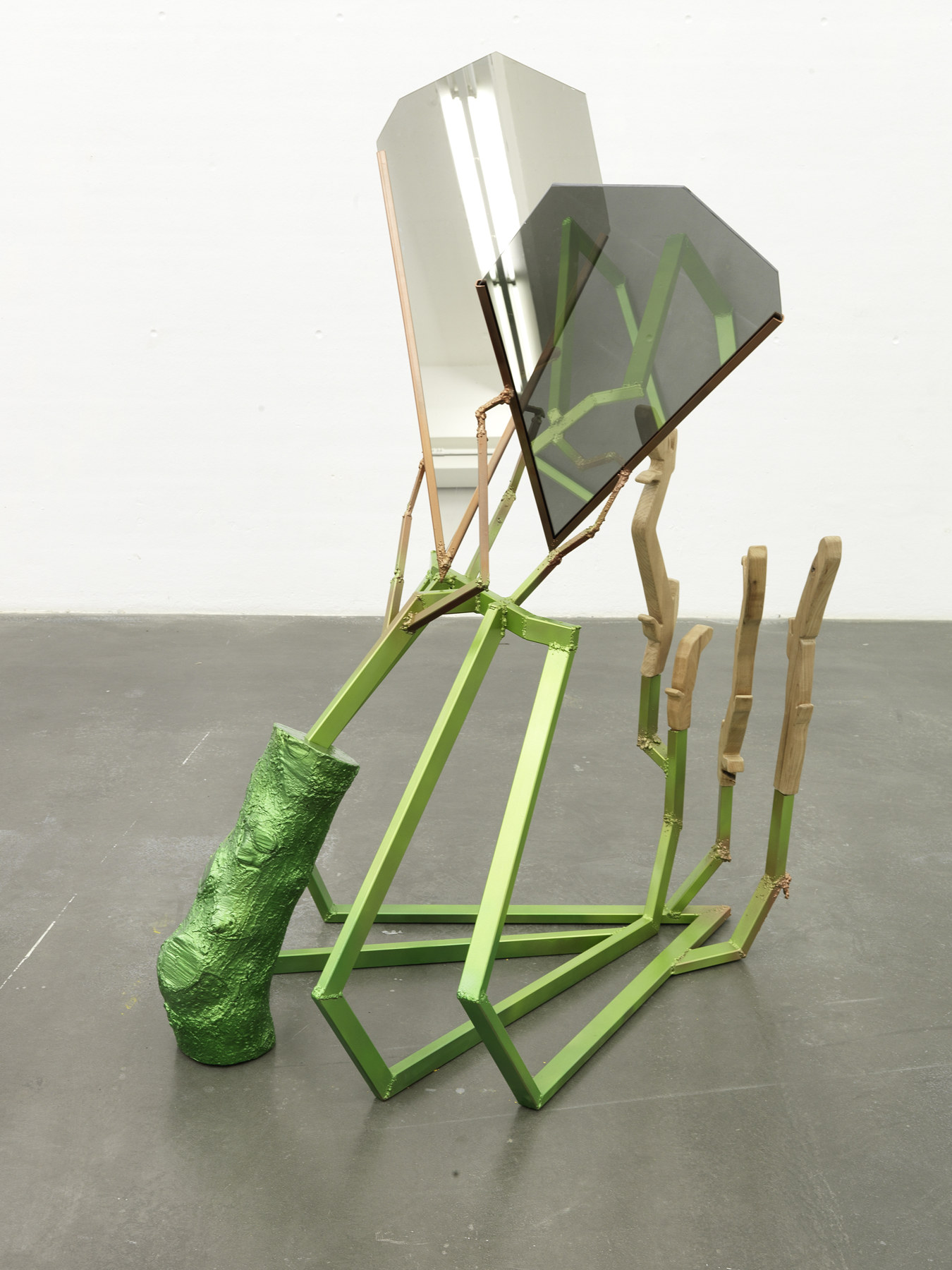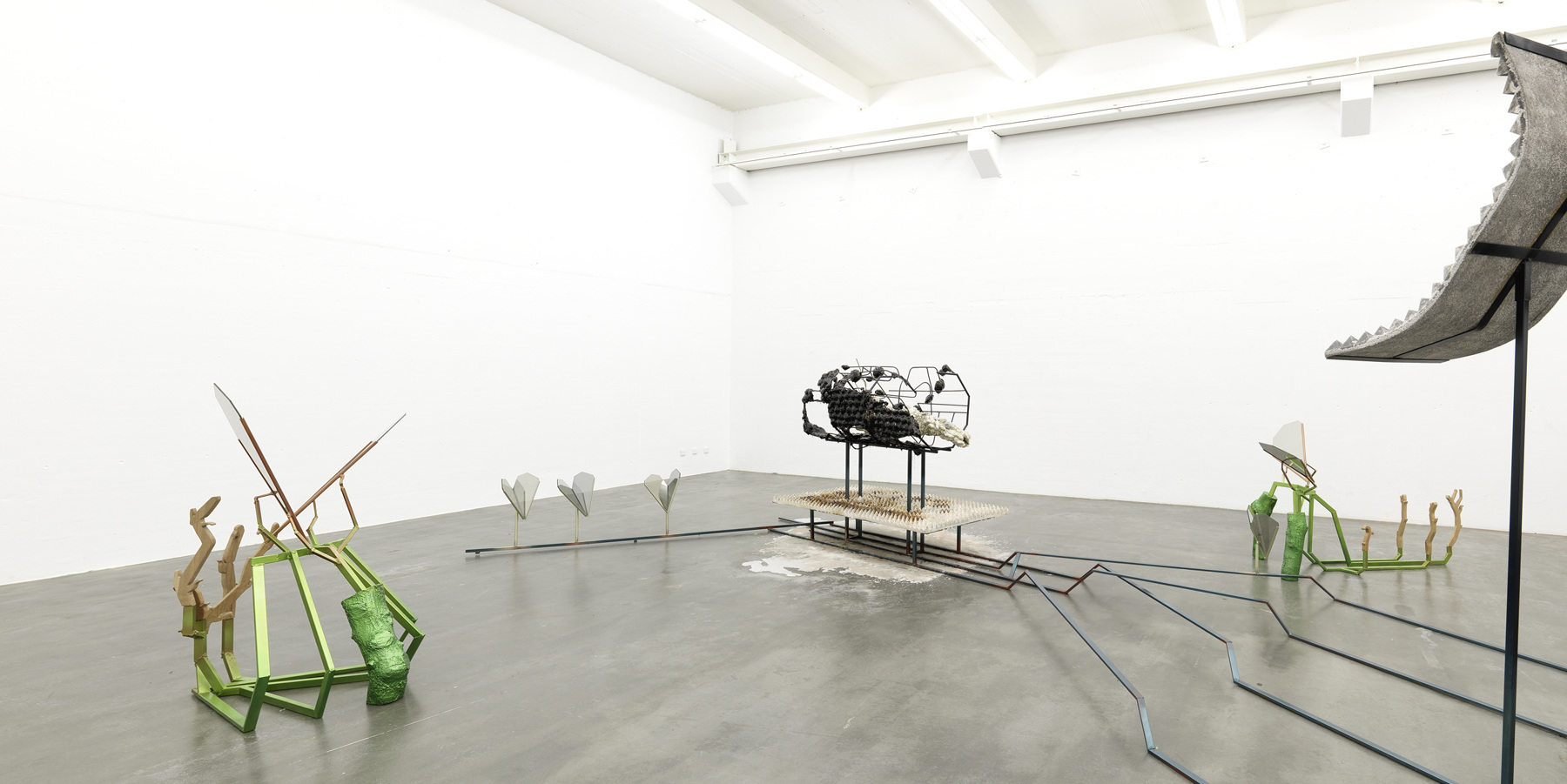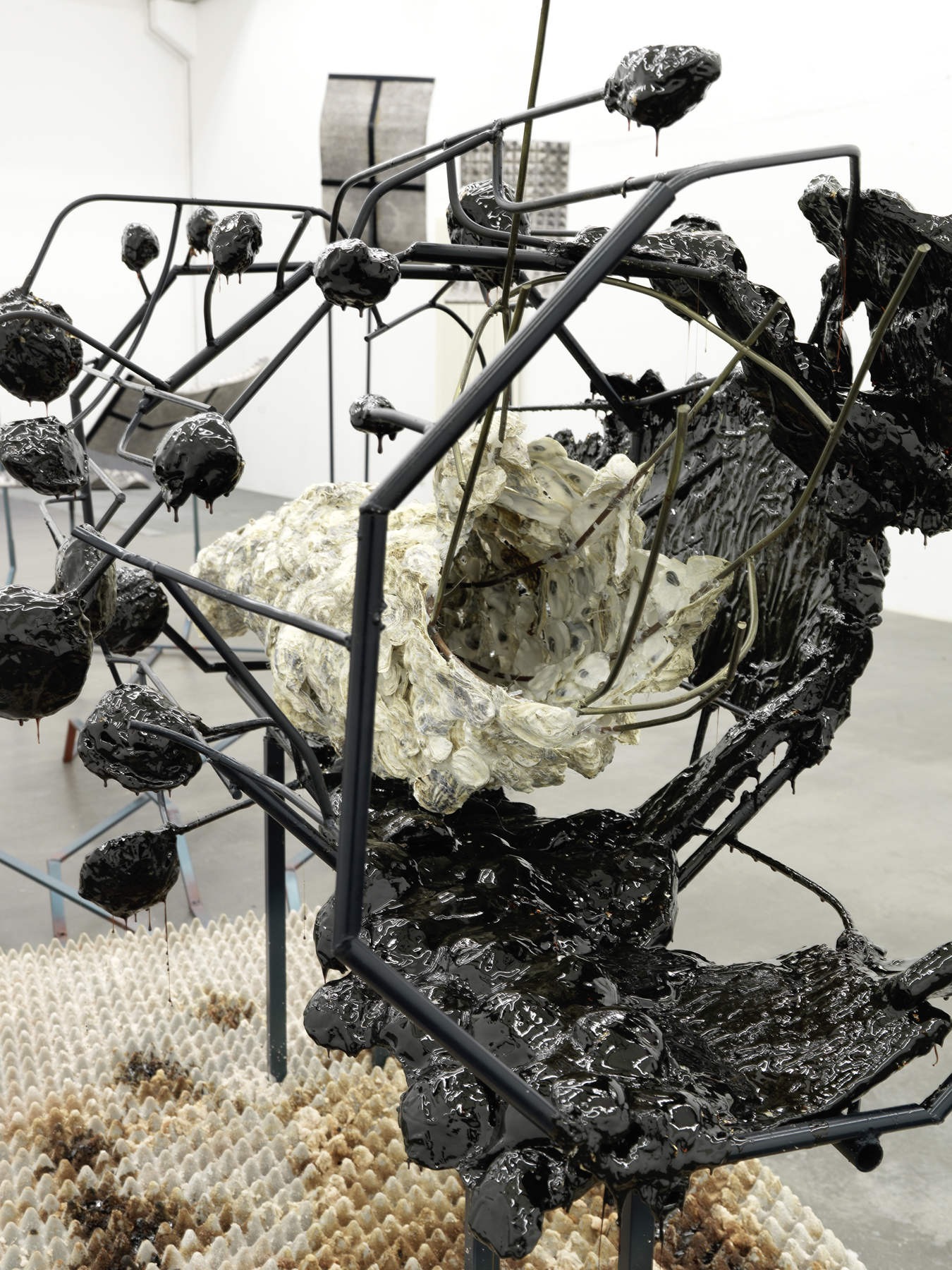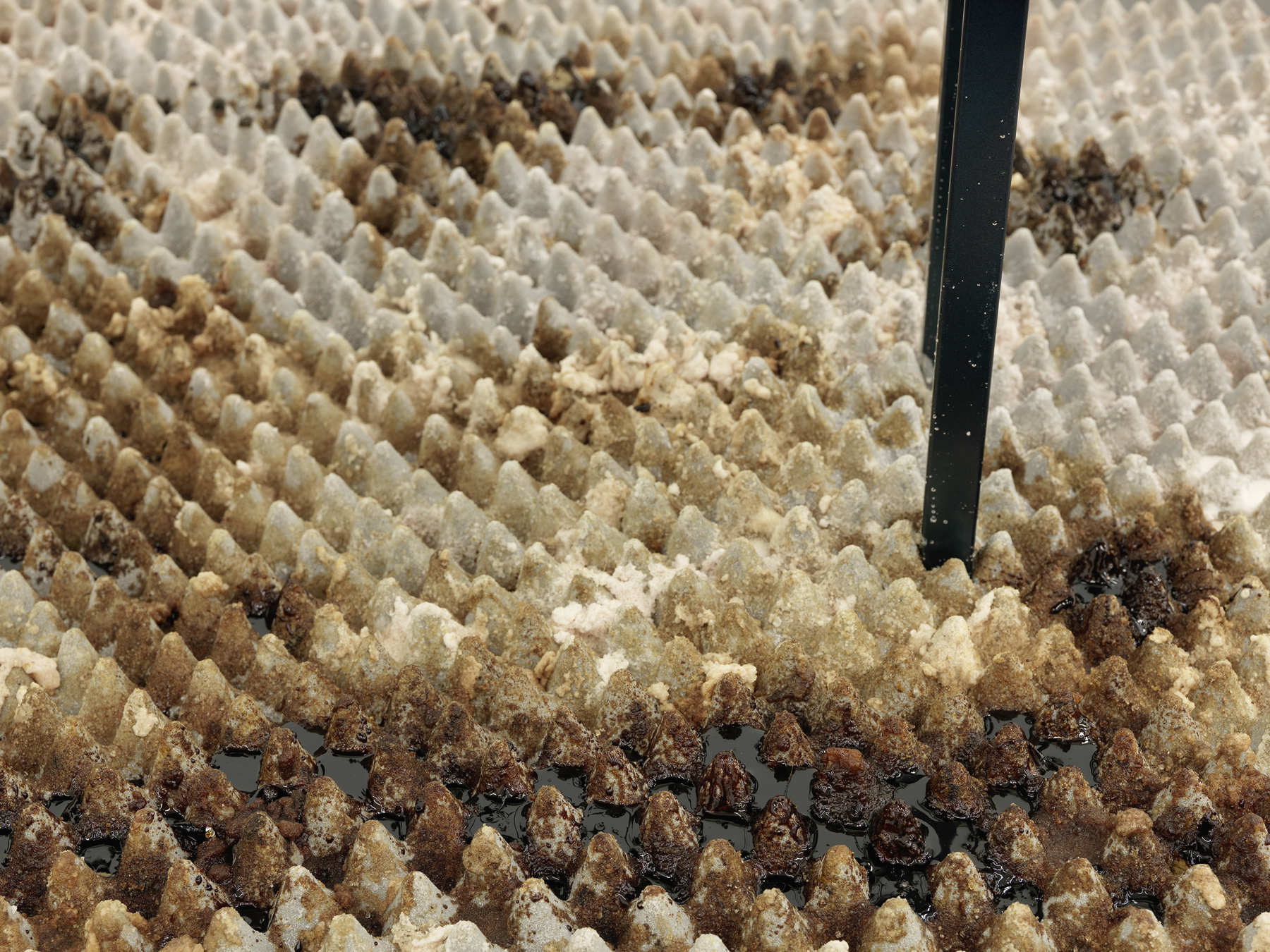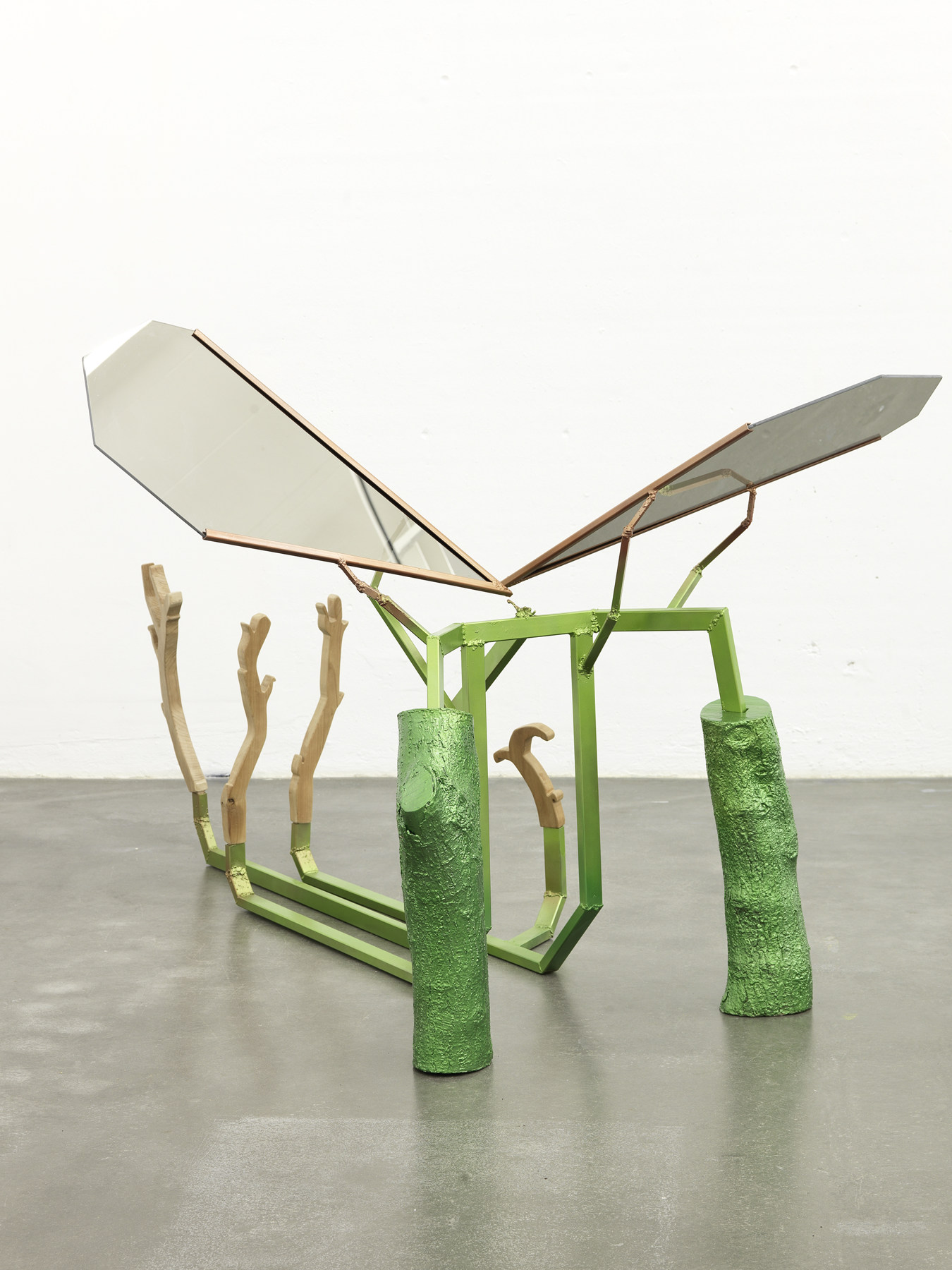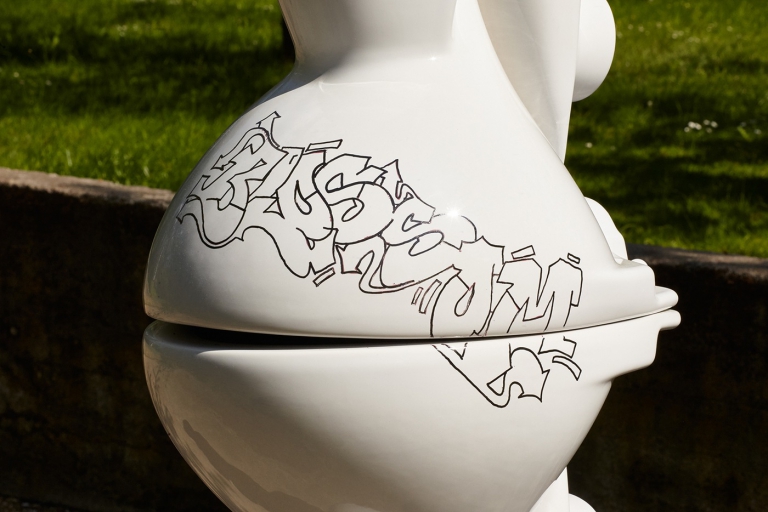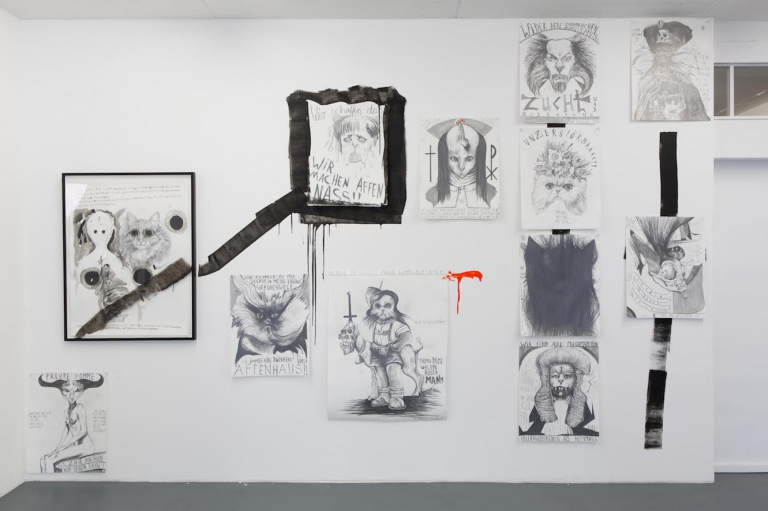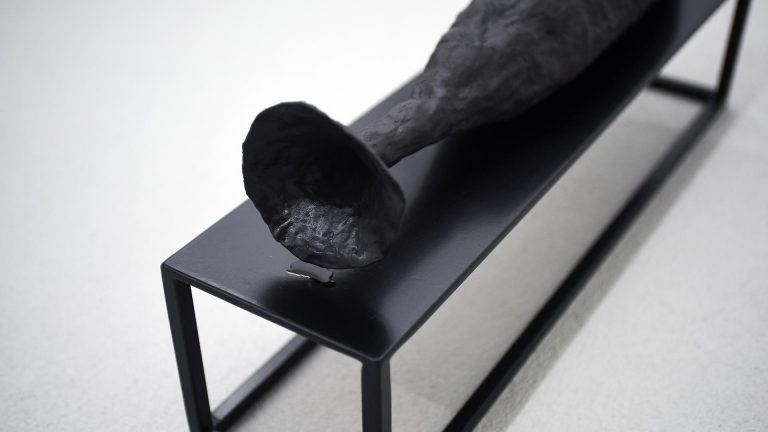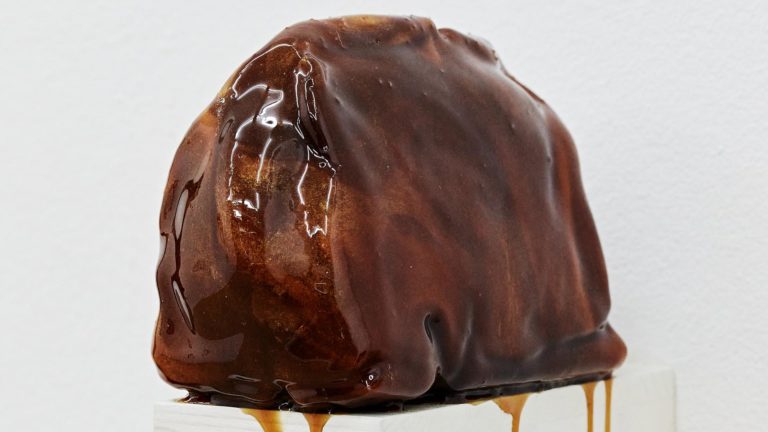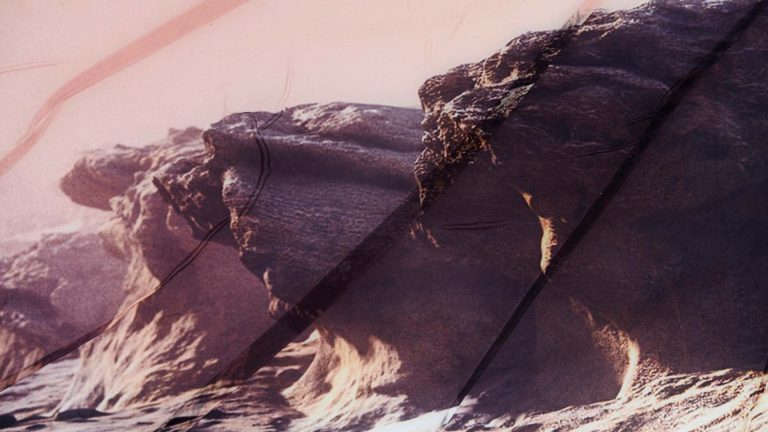Artist: Agata Ingarden
Exhibition title: Hot House
Venue: Berthold Pott, Cologne, Germany
Date: March 14 – April 3, 2019
Photography: all images copyright and courtesy of the artist and Berthold Pott, Cologne
Agata Ingarden combines, superimposes, connects and interweaves various types of materials in abstract sculptures that simultaneously evoke concrete forms. The vocabulary associated with her works refers to living organisms, plants, as well as technology. In various sizes, her sculptures hang either on the walls like sensor screens, from the ceiling like metal lianas, at the ends of which caramelised onions trickle down, or lie on the floor as strange vehicles, a combination of sledge and spaceship. The latter type, which is presented in this exhibition, consists of a large metal structure, drawn by a pair of mirrors in the form of fluttering hearts, driven by a machine composed of an arrangement of rods, caramel balls and a concretion of oysters. Spaceships, generators, sensor screens or insect machines camouflaged behind colours that artificially imitate nature – together, these sculptures set a narration in motion which explores the connection between humankind, nature and technology.
This narration takes form starting from the choice of materials and their treatment. The materials are ostensibly subjected to only a few modifications. They are often presented in a rough state, at times painted in a full colour and connected by gestures associated with elementary mechanics. The metal rods are rudimentarily welded together to form a geometric framework with visible joints. The wood is presented in its natural state or processed in a block to give back to it the schematic aspect of a branch. Connected at its end, the elements wood and metal seem to form some parts of a body. Both caramel and oysters are fused into an amorphous aggregate, without any fixed form or true unity. From this original state of matter, the obvious work of the hand and the scientific aspect of this work, a vision emerges directly out of the past of our future. A leap into an archaeo-futuristic universe that combines surrealism and alchemy.
Like Mary Shelley’s Frankenstein (1818), these sculptures occasionally even resemble creatures from elsewhere, whose ‘component parts might be manufactured, brought together, and endued with vital warmth.’[1] Some works actually seem to be permeated by activity. This happens when the caramel comes into contact with the air and a certain temperature. Modified by oxygen, it changes from a solid to a liquid state. It drips down onto the surrounding surfaces like a life fluid. This is reflected on a more metaphorical level in the use of acoustic foam, which absorbs the sound and waves that surround it. With each movement of the viewer, the mirrors reflect something new. Through these subtle but incessant changes, the sculpture becomes transformed over time. Beyond the fact that it adopts forms of life, it seems to manifest the energy that flows actively between materials and their environment.
At the core of Ingarden’s critical analysis, the concept of energy plays a fundamental role in her work. Irrespective of whether it lies in the mutation experienced by caramel, or is simply evoked it, it recalls the ideas of transformation reminiscent of those of entropy. Entropy ‘is the last and most mysterious of the five physical quantities (temperature, pressure, volume, internal energy, entropy) that represent the state of a thermodynamic system, i.e. a limited set of materials capable of exchanging heat and working with the external environment.’[2] But whereas, for Robert Smithson (1938–1973), entropy also corresponds to the irreversible collapse of things and the ‘energy is more easily lost than obtained, and that in the ultimate future the whole universe will burn out and be transformed into an all-encompassing sameness’,[3] it is not understood by Ingarden as something that necessarily leads to deterioration. Following the ideas of New Materialism, Ingarden regards matter as something active, whether animate or not, and perceives this energy as something that mutually interlinks the bodies. By leading us out into an environment in which nature and technology are fully interconnected and the boundary between the living and the non-living is fluid, the artist ultimately poses the question as to the influence of things and materials on humankind: How could the perception of this change our relationship to the world?
-Oriane Durand
Brief biography: Agata Ingarden, born in Kraków/Poland in 1994; studied at Beaux-Arts de Paris (2013-18) and Cooper Union, New York (2016). Solo exhibitions: 2018 – Piktogram, Warsaw; Sans-Titre, Paris / 2019 – Soft Opening, London (Jan./Feb.); Berthold Pott, Cologne (March/April); Liste Basel, with Piktogram Warsaw (June) / Group exhibitions: 2019 – Dash, Kortrijk/Belgium; Michel Journiac, Paris.

